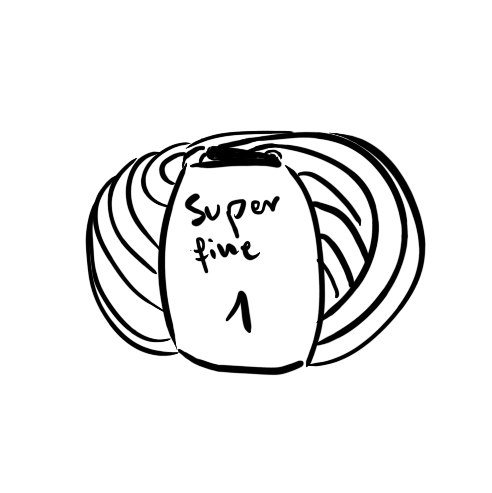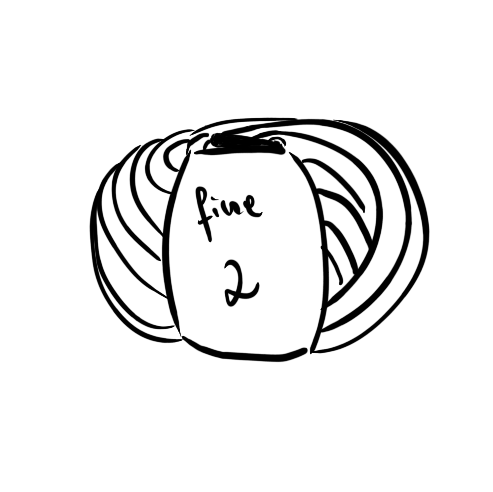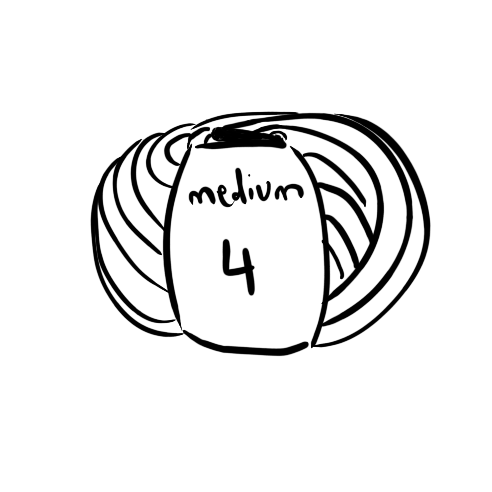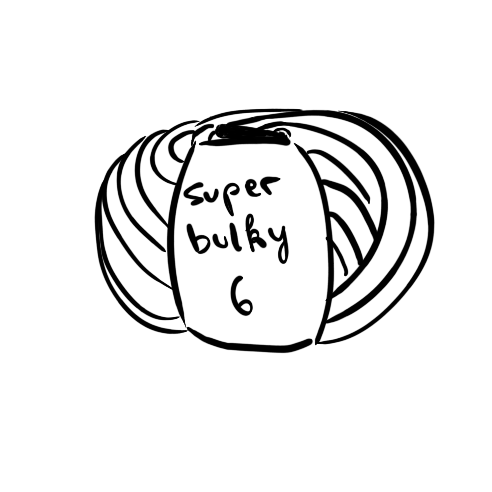YARN WEIGHTS
-

Category 0, Lace,
Cobweb, Thread, 1-Ply:
800 - 1000 m pr. 100g.
Needle size: 1,25 - 1,75 mm
Gauge: 38-40 stitches per 10 cm in stockinette stitch.
Lace, Laceweight: 2-Ply:
600 - 800 m pr. 100g.
Needle size: 1,75 - 2,0 mm
Gauge: 36-38 stitches per 10 cm in stockinette stitch.
Light Fingering: 3-Ply:
420 - 600 m pr. 100g.
Needle size: 2,0 - 2,25 mm
Gauge: 33-35 stitches per 10 cm in stockinette stitch.
-

Category 1, Super Fine
Fingering, Sock, Baby, 4 ply:
350 - 420 m pr. 100g.
Gauge: 27 - 32 stitches per 10 cm in stockinette stitch.
Needle size: 2,5 - 3,25 mm
-

See our accossories
FOUR CORNER BAGThrough many years of knitting, I’ve used and seen hundreds of project bags, usually the drawstring variety. I was frustrated with this classic bag design because it is too one-dimensional and difficult to get into. I wanted something I could open up and get to the bottom of, something I could hang on the arm of a chair and knit out of, plus something I could use for other purposes, such as transporting a box of pastries or my lunch! ....
-

Category 2, Fine
Sport, Baby, 5 ply:
300 - 350 m pr. 100g.
Gauge: 23-26 stitches per 10 cm in stockinette stitch.
Needle size: 3,5-4 mm -

Category 3, Light
DK, Light Worsted, 8 ply:
300 - 350 mpr. 100g.
Gauge: 21-24 stitches per 10 cm in stockinette stitch.
Needle size: 3.75-4.5 mm -

Category 4, Medium
Worsted, Aran, Afghan, 10 ply:
150 - 240 m pr. 100g.Gauge: 16-20 stitches per 10 cm in stockinette stitch.
Needle size: 5-6.5 mm -

Kategorie 5, Bulky
Chunky, Craft, Rug, 12 ply:
100 - 150 m pr. 100g.Gauge: 12 - 15 stitches per 10 cm in stockinette stitch.
Needle size: 6.5-8 mm -

Category 6, Super Bulky:
Bulky, Roving, 14 ply:
60 - 100 m pr. 100g.Gauge: 6-11 stitches per 10 cm in stockinette stitch.
Needle size: 8 mm and larger.
This is a guide for substituting yarn weights when working with two strands held together.
2 strands of lace weight yarn = 1 strand of fingering weight yarn
1 strand of lace weight yarn + 1 strand of fingering weight yarn = sport weight
2 strands of fingering weight yarn = DK weight
2 strands of sport weight yarn = worsted weight
2 strands of DK weight yarn = bulky weight
2 strands of worsted weight yarn = super bulky weight or thicker.
(Note: This is a guide for substituting yarn weights when working with two strands held together.)
A "formula" that you can use to calculate the gauge when combining yarns is to add up the gauges of each yarn and then divide by 3 (always by 3, regardless of how many yarns you are combining).
For example, if you combine a fingering weight yarn with a gauge of 27 stitches per 10 cm and a DK weight yarn with a gauge of 21 stitches per 10 cm, you would end up with a gauge of 16 stitches per 10 cm, which is equivalent to an Aran weight yarn.
(27 + 21 = 16 stitches per 10 cm). It works every time!
Yarn weights in English patterns
Everyone who has ever knitted with English patterns has probably come across terms such as "worsted" or "fingering" for yarn weight. Maybe you were like me at first: What... is that!? However, once you understand the principle, it is actually quite easy to convert these English yarn weights into understandable terms for us. Unfortunately, we do not have designations for yarn weights, and we have to make do with "thick", "thin", "like sock yarn", etc. So the English terms are actually a good idea. Although we have a standard system for indicating yarn weights, this is only rarely indicated on German yarn labels. To convert English yarn weights, it is best to look at the specified yardage and, if applicable, the specified needle size. The number of plies in the yarn can also be used for orientation, but the number of plies is mostly not indicated on German labels.








